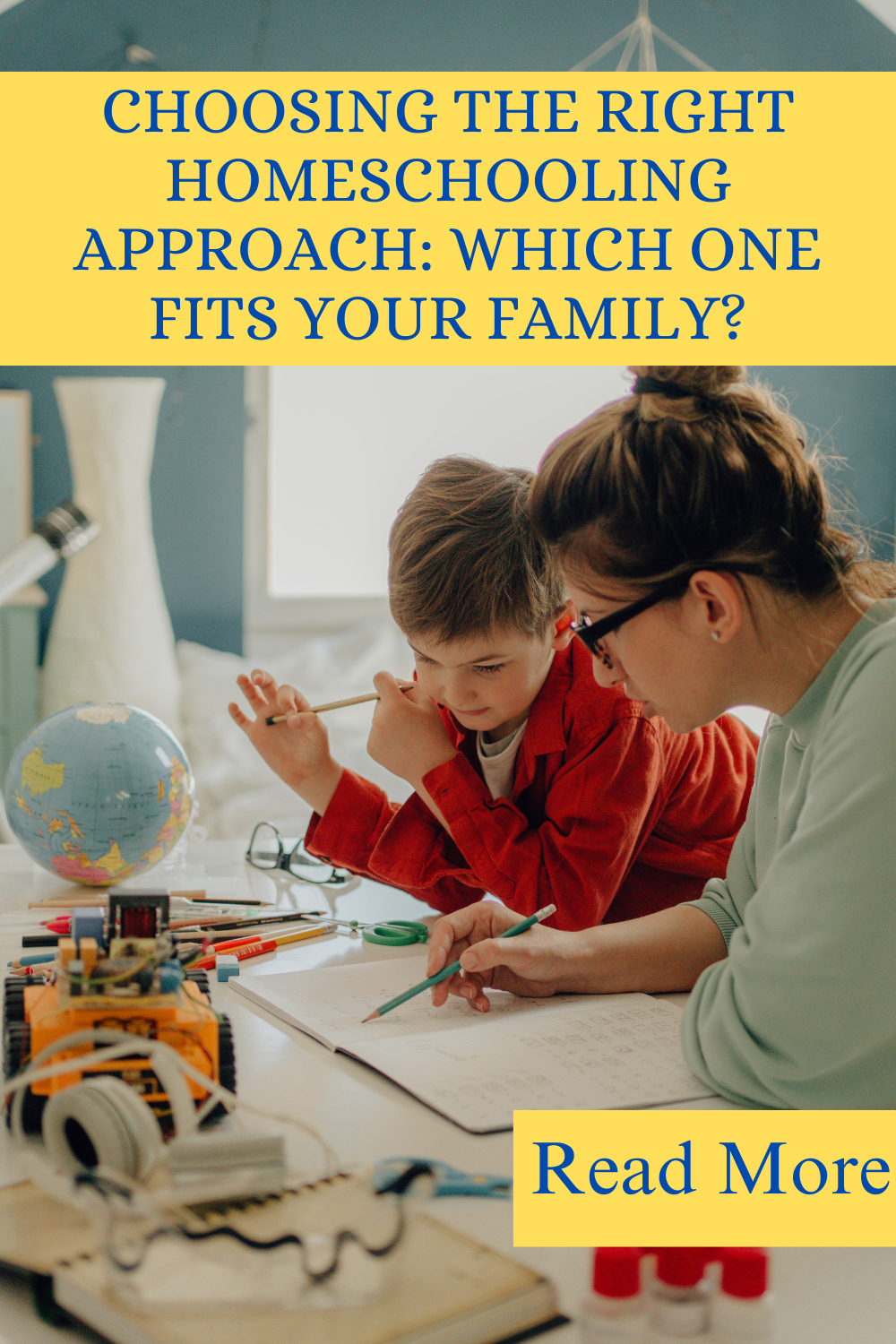Choosing the Right Homeschool Approach
I recently had a very interesting conversation with an acquaintance who asked about my personal homeschool journey. During our discussion, I learned that she was considering homeschooling but felt overwhelmed by the abundance of information and resources available. When I first started homeschooling, I did a lot of research—so many philosophies, methods, and ideas to explore! Eventually, I found my stride as a mix of Waldorf and traditional homeschooling. One thing I’ve learned is that choosing the right homeschool approach is highly individual—what works for one family (or even one child) might not work for another. Sometimes, different kids need different approaches within the same household!
I thought writing a blog post might help others who are starting a journey that I cherished for eight years. I totally geek out when talking about learning styles and the pros and cons of each! Even though my children are now in traditional school, I loved homeschooling and look back fondly on the time I was able to spend with them, as well as the strong foundational skills I helped instill at a young age.
1. The Traditional Approach: School at Home
This method mirrors a conventional classroom, with structured lessons, textbooks, tests, and a clear curriculum. Families who prefer familiarity or plan to transition back into traditional schooling often find comfort in this approach. It’s also a good fit for parents who appreciate a clear roadmap with set expectations.
🔹Best for: Families who like structure, parents new to homeschooling, or those using online curriculum programs.
🔹 Potential Challenges: It may feel rigid for students who thrive with hands-on, exploratory learning.
2. The Charlotte Mason Method: Learning Through Living Books
Charlotte Mason, a 19th-century educator, believed in the power of living books—rich, engaging literature instead of dry textbooks. This approach focuses on short lessons, nature study, art appreciation, and narration (where children retell what they’ve learned).
🔹 Best for: Families who love books, nature, and a gentle approach to learning.
🔹 Potential Challenges: Requires parental involvement in curating high-quality literature and planning outdoor learning experiences.
3. The Classical Approach
Classical education follows a three-stage process:
Grammar Stage (K-6): Focus on memorization, facts, and foundational knowledge.
Logic Stage (7-9): Critical thinking, reasoning, and connecting ideas.
Rhetoric Stage (10-12): Persuasive speaking, writing, and applying knowledge.
This method often incorporates Latin, Socratic discussions, and a strong emphasis on classic literature.
🔹Best for: Families who love structure, critical thinking, and time-tested education models.
🔹 Potential Challenges: Can feel rigorous for kids who prefer creative or hands-on learning.
4. The Montessori Method
Maria Montessori’s philosophy emphasizes independence, hands-on materials, and self-directed learning. Montessori homeschoolers use beautifully designed materials that encourage exploration, problem-solving, and real-world skills.
🔹 Best for: Hands-on learners, young children, and parents who love a prepared environment.
🔹 Potential Challenges: Requires specific materials and a well-organized space; may not be a good fit for older students.
5. The Waldorf Method
Inspired by Rudolf Steiner, Waldorf homeschooling is centered around storytelling, arts, music, and practical life skills. Early childhood education focuses on play and imagination, while older students engage in creative subjects before diving into academics.
🔹 Best for: Families who value creativity, rhythm in daily learning, and a holistic approach.
🔹 Potential Challenges: Limited use of technology and structured academics in the early years may not work for every family.
6. The Unschooling Approach
Unschooling is one of the most flexible homeschooling approaches—it follows a child’s natural interests without a set curriculum. Learning happens through daily experiences, conversations, hands-on projects, and curiosity-driven exploration.
🔹 Best for: Self-motivated learners, parents comfortable with flexibility, and families who believe in organic learning.
🔹 Potential Challenges: Requires trust in the process; may be hard to document progress for those in states with strict homeschool laws.
7. The Unit Study Approach
Instead of separating subjects, unit studies integrate multiple areas of learning around a central theme. For example, a space-themed unit study might include reading about astronauts (literature), measuring distances in space (math), and doing a rocket experiment (science).
🔹 Best for: Hands-on learners, kids who love to immerse themselves in a topic, and multi-age homeschooling families.
🔹 Potential Challenges: Requires effort to create or find well-structured unit studies.
8. The Eclectic Approach
If you love elements of multiple approaches, you might be an eclectic homeschooler! This method blends different styles based on a child’s needs. Maybe you use Charlotte Mason for reading, Montessori for hands-on math, and Unschooling for science experiments.
🔹Best for: Families who value flexibility and personalization.
🔹 Potential Challenges: Requires trial and error to find the right mix.
During this conversation, I was asked how to best choose a homeschooling approach. I don’t think you need to choose just one, nor do I believe there is a perfect method—only what works best for your child and family dynamic. Many homeschooling families experiment with different methods or even blend them to fit their needs. To decide what’s right for your family, start by observing your child’s learning style—do they thrive with hands-on activities, structured lessons, storytelling, or self-directed learning? Next, consider your teaching style—do you prefer a flexible approach, or do you feel more confident with a structured plan? Finally, think about your long-term goals—are you aiming for a strong academic foundation, creative exploration, or a balance of both? At the end of the day, homeschooling is about creating an environment where your child thrives. Whether you lean toward Charlotte Mason, Classical, Montessori, or Unschooling, the key is to embrace what works and adjust as needed.

